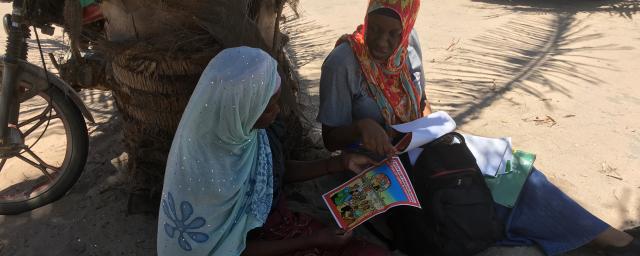
Sheila Bicho, Safeguarding Officer in Mozambique, is sharing safeguarding messages to women in the community.
“Oxfam’s approach to safeguarding in a humanitarian response is to work together with other organizations.”
My name is Ceri Cockram and I’m one of two “Safeguarding Humanitarian Support Personnel” (HSPs) working in Oxfam’s Global Humanitarian Team. We are specialists, ready to deploy quickly into a country where Oxfam needs to give our local team a boost as we mount a response. This year, for instance, I’ve worked in Ethiopia and now I’m in Mozambique as part of Oxfam’s cyclones response.
Oxfam’s approach to safeguarding in a humanitarian response is to work together with other organizations, for example, through Protection from Sexual Exploitation and Abuse (PSEA) Networks. In Mozambique, Oxfam helped to establish a PSEA network with UN, international and national agencies very early in the response, because the crisis happened so quick and inter-agency coordination was crucial from the start.

In Ethiopia, Oxfam participates in the PSEA Network and one of my Oxfam colleagues is helping to develop information, education and communication products that all other agencies can use too.
We have hired a full time Safeguarding Officer in Mozambique who is coordinating the work of the Safeguarding Focal Point staff, who carry out their safeguarding duties alongside their primary roles. Here, we have some excellent collaboration between Safeguarding/PSEA and ongoing gender and protection work and initiatives on training, community-based complaint mechanisms and on information, education and communication.
We have some excellent staff doing safeguarding work. It is important how we translate all our analysis, plans and best practices into quality implementation on the ground. It requires a genuine consistency in our field staffing, ongoing training, good monitoring, and the ability to handover effectively when staff change roles or leave. These are the kinds of challenges we need to overcome to make substantive long-term progress.
Part of the answer is to have staff continuity and additional staff capacity and resources to implement safeguarding measures, monitor outputs and share good practice, as well as strong leadership overall on safeguarding. Our donors always – rightly – want Oxfam programs to deliver tangible results, but they are also recognizing more now just how critical safeguarding is as part of that implementation – focusing on “how” a program is delivered as well as “what” it achieves.
